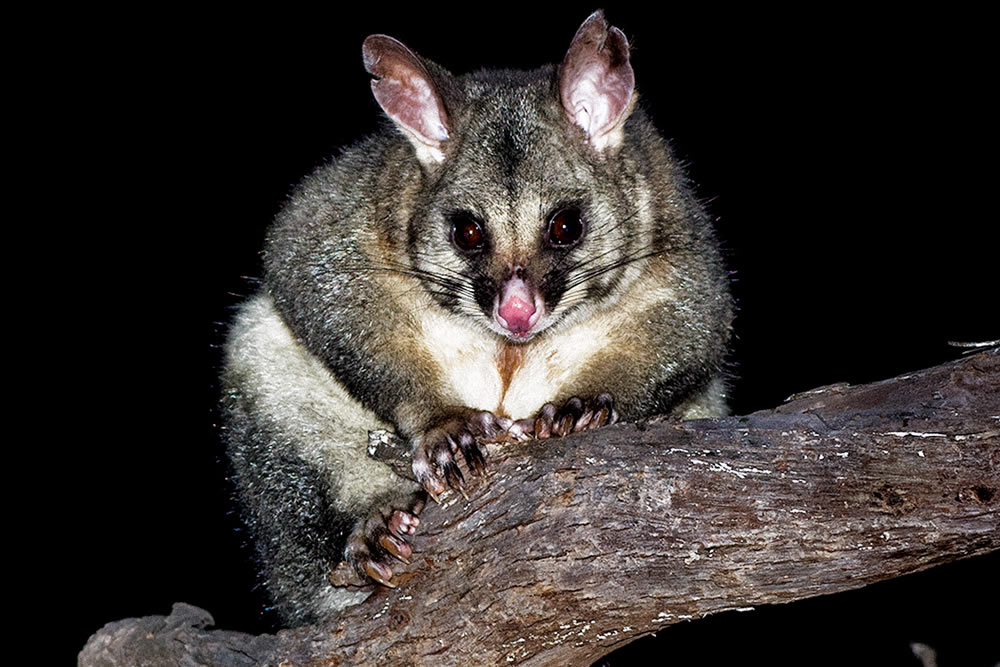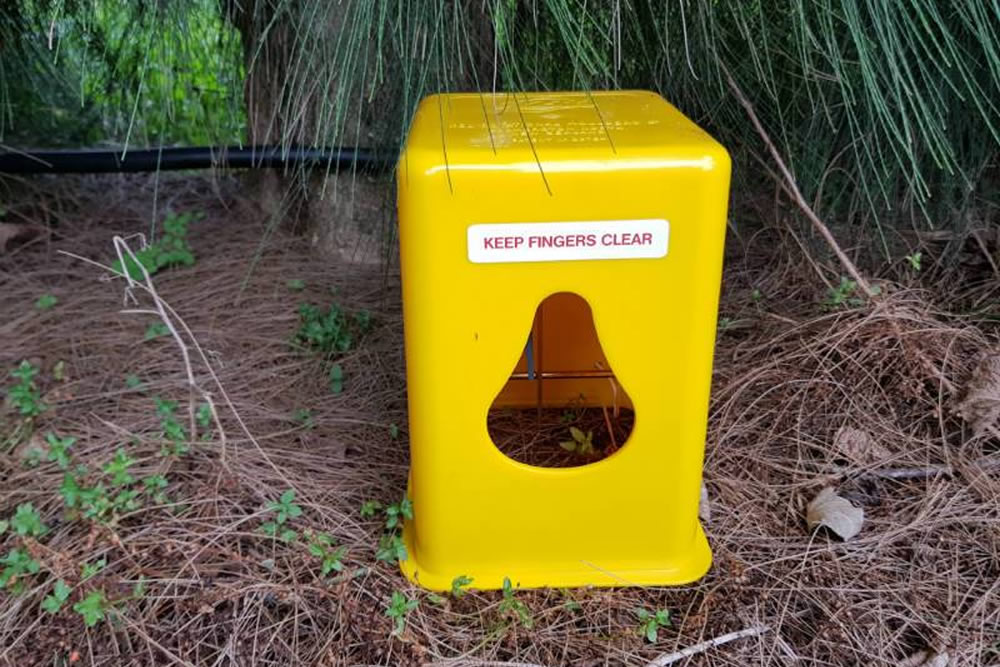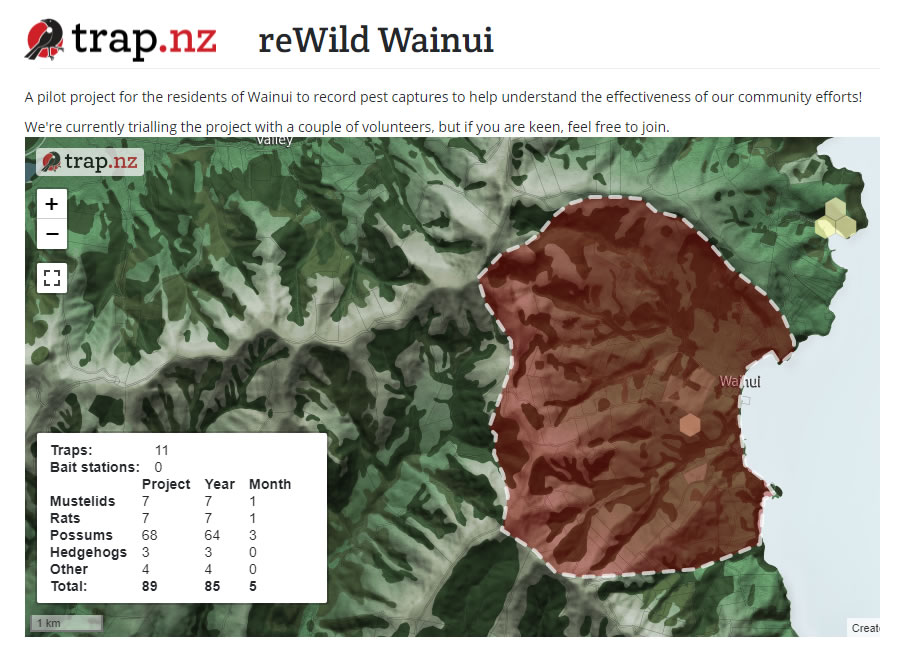If possums are your thing you’ve possibly by now chosen a trap, so it’s time to figure out how to catch them!
Be aware, often it’s a learning process to see what works on your property. Often this is a combination of trap placement, lure or bait, the time of year, and understanding their behaviour.
Step 1: Have you got possums?
It might sound silly, but step 1 is to check if you have possums. Banks Peninsula and Wainui have tons of possums, so in all likelihood you do. You might have seen them at night, or you could have heard them, or you’ve seen the outcome, plants, especially fruit trees damaged. So rather than using traditional counters, such as chew cards, a camera can confirm you have possums, and then give you insight into their location and behaviour, to help with you trapping efforts. More on cameras later.
Step 2: Trap Placement
Trap placement is super important. Like they say “fish where the fish are”! We’re going to assume you are using a tree mounted trap, as these are the most popular
- Possums have favourite foods, or trees, so a good starting point is look for scratchings or markings on the trees on your property. Mahoe is a particular favourite and being a softer wood the scratches are very apparent. The tree should be around 30cm diameter, so they can get their paws around it
- Attach the trap around 1 metre off the ground, to avoid non target species, and ideally screw your trap to the tree. Some people like to mount the trap on a board, and then strap the board to the tree, so it’s easier to move and try different locations.
- Possums tend to follow a “pathway” in the bush, using cameras you may identify these, obviously then place your traps there!
- The reality is, some trap locations will perform better than others. If you’ve not had significant results after a few weeks in a location, move the trap and try again.
Step 3: Baits or Lure to Use
Unlike many other pests possums traps don’t typicality need pre-baiting to get them used to the trap, they are generally quite inquisitive. Effective lures include:
- Peanut butter, the standard!
- Nutella, our favourite.
- Fruit, such as apple sprinkled with cinnamon
- There are numerous commercial baits, try them if you wish and see how they perform against your standards.
- Check your trap and refresh your bait as often as you can. Rodents will compete with possums for the bait, so the more it is fully baited, the more possums you are likely to catch!
Step 4: Record your catches!
The reason behind reWild Wainui was to help connect Wainui’s community of new or existing trappers. The goal is to understand the successes we are all having, and help us achieve even better results through sharing knowledge.
Recording your catch is important to understand how many we are catching, but also what traps are working, what bait is most effective, and where we are catching them so we can identify hot spots or gaps.
We can help you get setup on Trap.nz, and they have a good app to help record your catches.
Download our step-by-step guide for registering on Trap.nz, it’s easier than you might think!
Possum Trapping Tips
- Possums sense of smell is not that great, only around 3 metres, but they do respond to visual cues. This is why some traps are white or brightly coloured.
- Additionally you can add some “Blaze” to the tree trunk beneath your trap, as a visual cue. Mix 10 parts flour to 1 part icing sugar, add a little bit of cinnamon, then sift. Make a good amount and put into a 2L milk bottle and take with you when you are setting your traps, sprinkle some at the base and up each tree.
- Scent trails from other possums, or even rodents are important. You’ll often find once a trap has caught one possum, it then starts catching more. Try dragging a dead animal along the ground then up the tree to deposit scent.
- Try changing the bait type periodically, so that possums that are less inclined to one bait might be try the new one.
- Similarly, if you’re trap isn’t catching anything and you’ve tried different baits, move the trap to a different location and try again. It’s not uncommon for 20% of your traps to account for 80% of your catch.
- Download DOCs excellent Predator Free 2050 “Practical Guide To Trapping” (PDF download), it has a wealth of knowledge for the keen trappers!
- Even better, download our guide for trapping possums in Wainui, it’s a short one pager (well, double sided) that will get you up and trapping quickly! Download our possum trapping guide here.
Possum Facts

Possums damage our native forests by browsing on foliage, flowers and fruit. They also prey on our native fauna and compete with native birds and reptiles for food sources such as nectar
Possum Traps

You might have seen the industry workhorse, the Timms trap, but there are many more effective traps available these days. Our guide will help choose the trap that’s right for you.
Possum Trapping Tips

Possums spend around 85% of their time in trees, have a poor sense of smell, and males vs females have very different behavior. Here’s our possum trapping tips.
Let’s work together to help reWild Wainui!
Join our community initiative to reduce Weeds, remove Pests and replant Natives.
